Complete Solutions to Example of chapter ELECTRICAL INSTRUMENTS of Class 12 book with complete answers and questions
| Class 12 | PHYSICS |
| Chapter | ELECTRICAL INSTRUMENTS |
| SL ARORA | Example |
| Number Of Questions | 31 |
| Academic Year | 2023-24 |
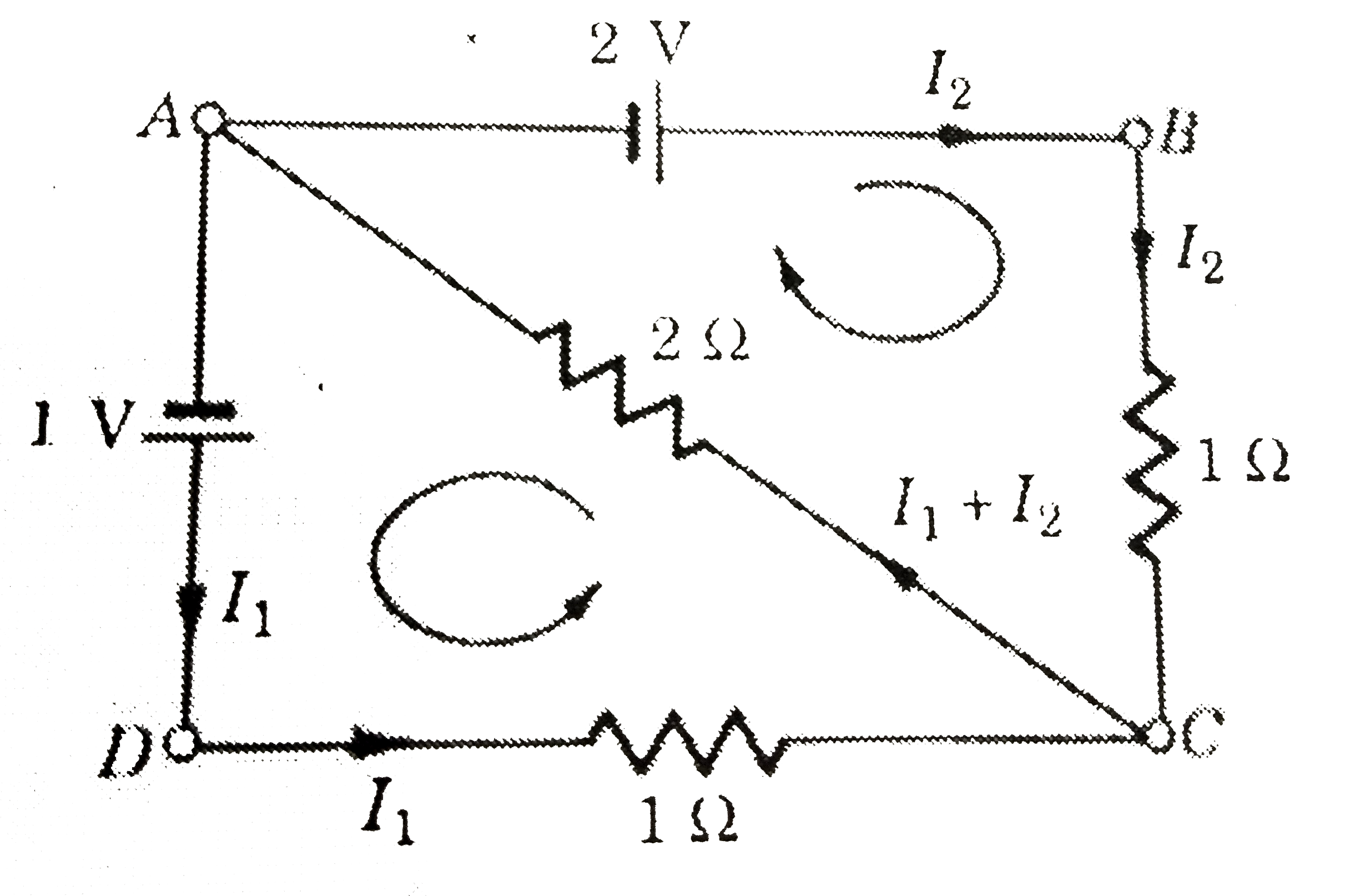
In the circuit shown in figure. Calculate the current in each resistance. The internal resistnaces of the cells are negligible.04:39View SolutionUsing Kirchoff's laws in the electrical net work shown in figure, calculate the values of `I_(1),I_(2)` and `I_(3)`.
 04:07View Solution
04:07View SolutionTwo cells of emfs 1.5 V and 2.0V internall resistance `1 Omega` and `2 Omega` are connected in parallel so as to send current in the same direction through an external resistance of `5 Omega`.
(i) Draw the circuit diagram. (ii) Using Kirchhoff's rules, calculate.
(a) current through each branch of the circuit (b) potential difference across the `5 Omega` resistance.07:01View Solution
Find the current flowing through each cell in the circuit shown in figure. Also calculate the potential difference across the terminals of each cell.06:03View Solution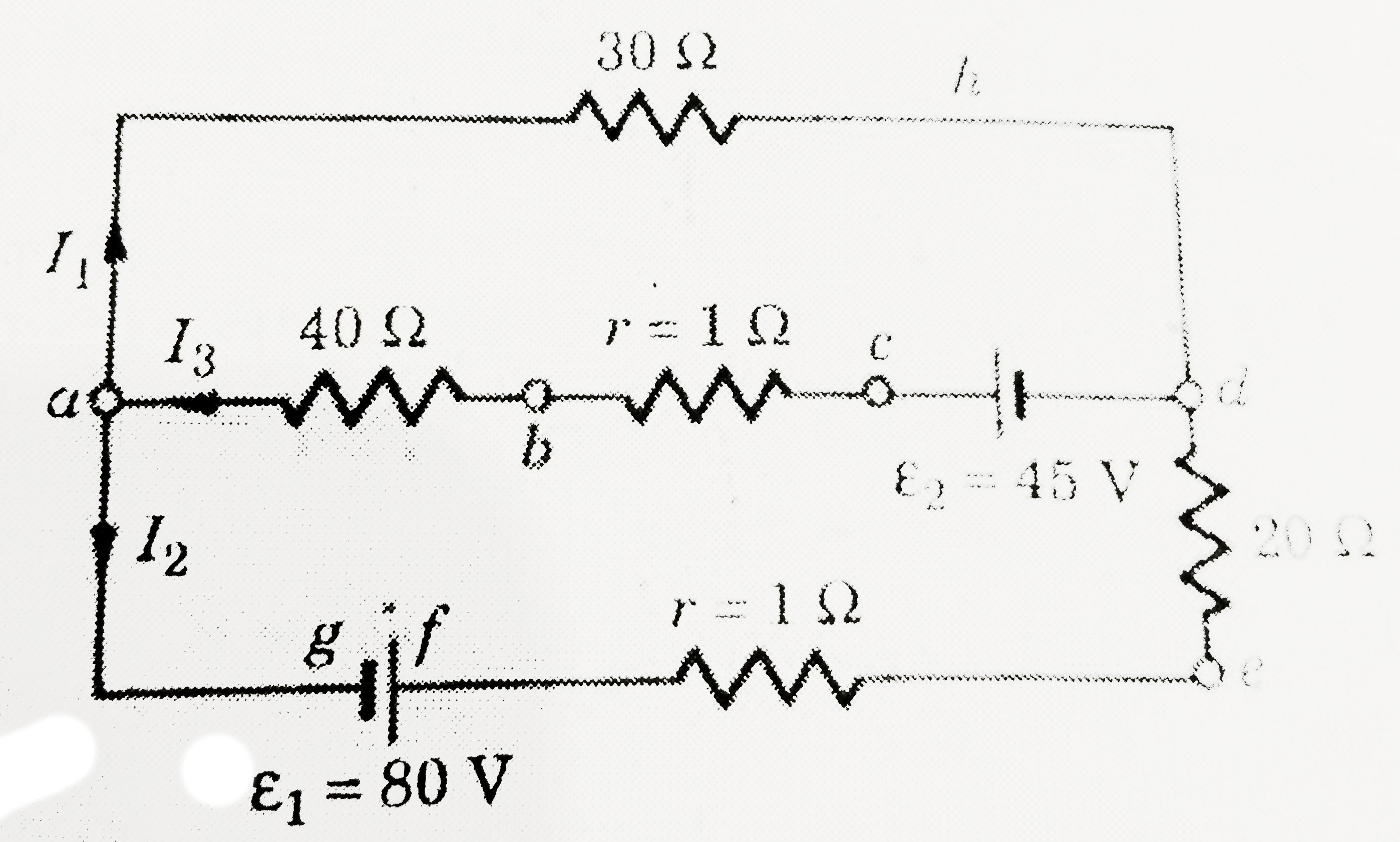
Determine the currents `I_(1),I_(2) and I_(3)` from the network shown in figure.04:39View SolutionDetermine current in each branch of the network shown in figure
 05:09View Solution
05:09View SolutionDetermine current in each branch of the network shown in figure
 05:09View Solution
05:09View Solution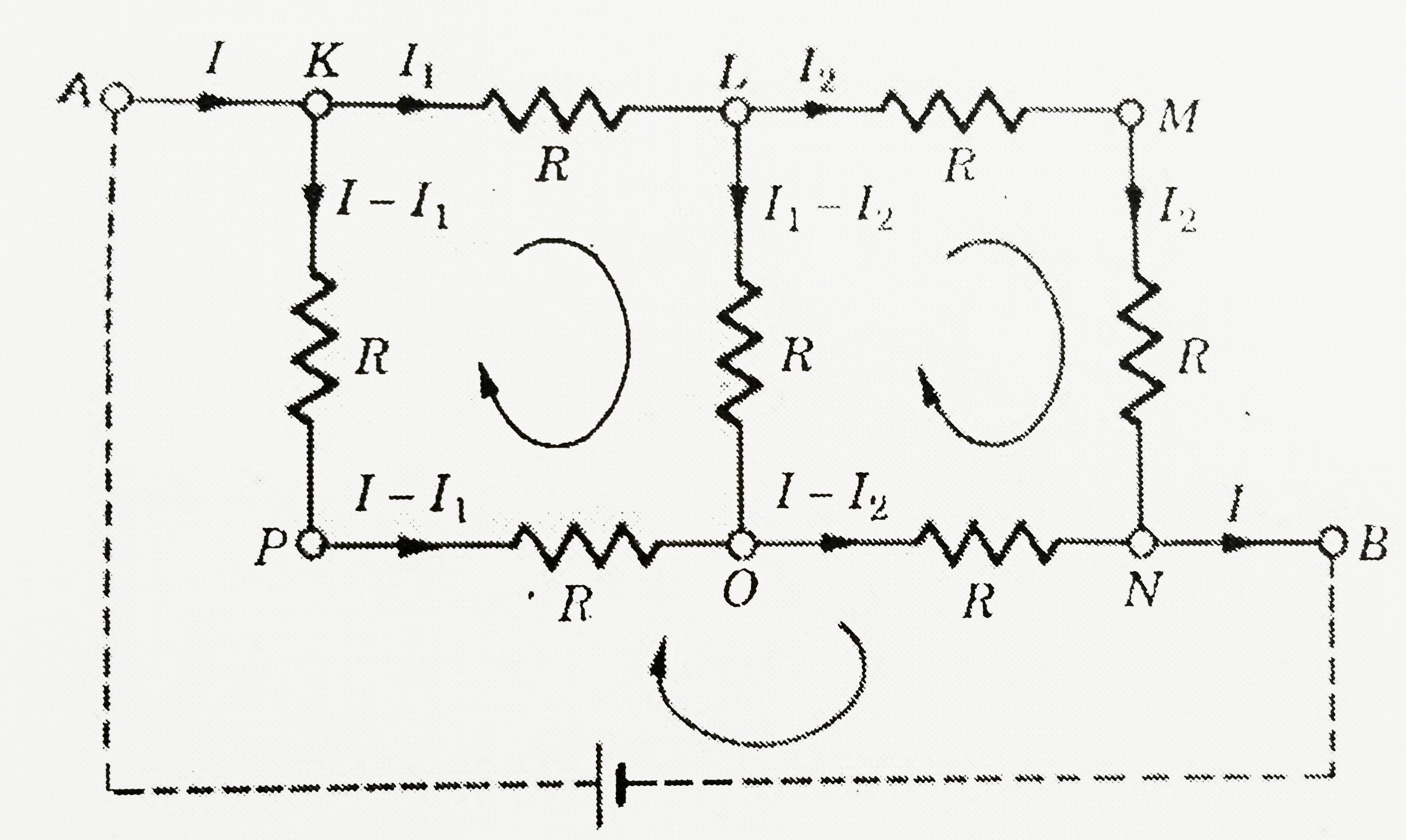
Find the equivalent resistance between the terminals A and B in the network shown figure. Given each resistor R of `10Omega`.07:27View SolutionTwo squares ABCD and BEFC have the side BC in common. The sides are of conducting wires with resistances as follows: AB,BE,FC and CD each `2Omega:AD,BC,EF` each `1Omega`. A cell of e.m.f. 2V and internal resistance `2Omega` is joined across AD. Find the currents in various branches of the circuit.
06:37View SolutionFind the currents going through the three resistors `R_(v),R_(2)andR_(3) in the circuit of figure.
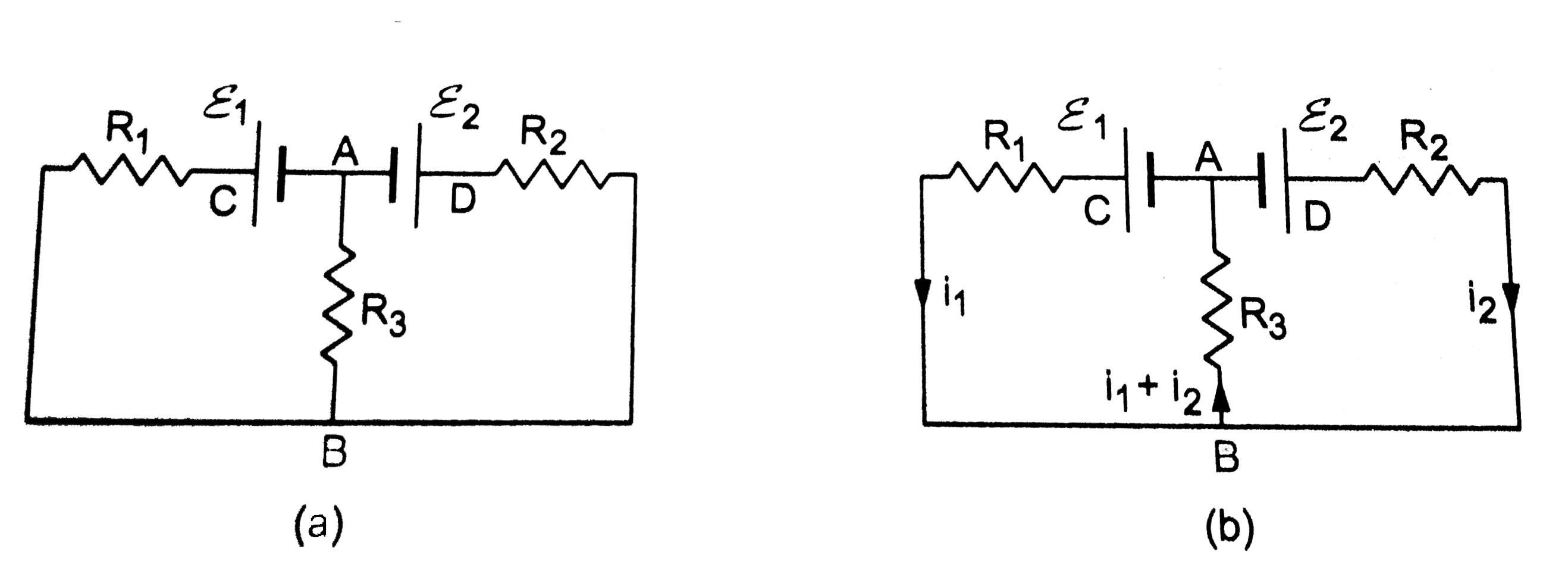 06:33View Solution
06:33View Solutionn' cells , each of emf 'e' and internal resistance 'r' are connected in a closed circuit so that the positive terminal of a cell is joined to the negative terminal of the next, as shown in figure. Any two points of the circuit are connected by an external resistance R. Find the current in R.
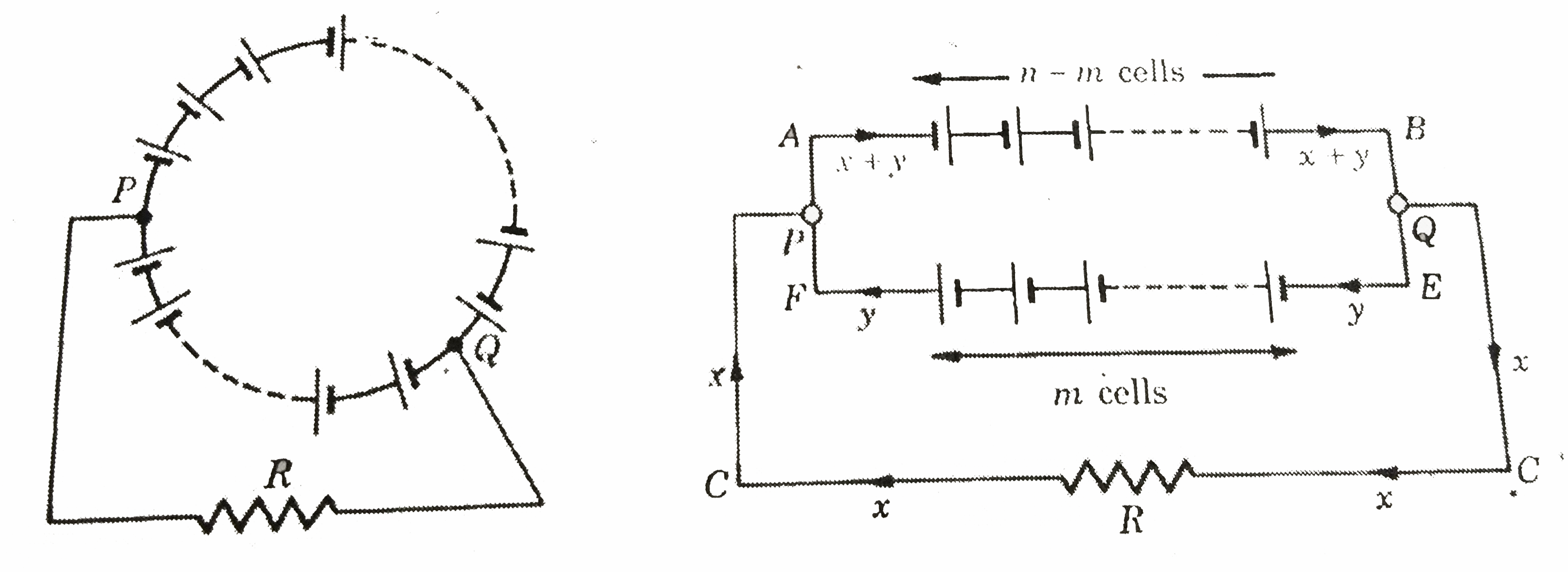 07:58View Solution
07:58View SolutionEleven equal wires each of resistance r form the edges of a incomplete cube. Find the total resistance from one end of the vacant edge of the cube to the other.
07:53View SolutionA galvanometer coil has resistance of `30Omega` and the meter shows full scale deflection for the current of 2.0 mA. Calculate the value of resistance requried to convert it into an ammeter of range 0 to 1A. Also calculate the resistance of the ammter.
02:55View SolutionA galvanometer with a coil of resistnace `12.0Omega` shows full scale deflection for a current of 25 mA. How will you convert the meter into:
(i). An ammeter of range 0 to 7.5 A.
(b). A voltmeter of range 0 to 10.0 V
Determine the net resitance of the meter in each case. when an ammeter is put in a circuit, does it read (slightly) less or more than the actual current in the original circuit? when a voltmeter is put across a part of the circuit, does it read (slightly) less or more than the original voltage drop? Explain.07:15View Solution
A battery of emf 9 V and negligible internal resistance is connected to a 3 k `Omega` resistor. The potential drop across a part of the resistor (between points A and B in the figure) is measured by (i) a 20 k `Omega` voltmeter, (ii) a 1 k `Omega` voltmeter. in (iii). both the voltmeter are connected across AB. in which case would you get the (a) highest, (b) lowest reading?02:29View SolutionTwo cells of emfs `E_(1)` and `(E_(2) (E_(1) gt E_(2))` are connected as shows in Fig. `6.45`.

When a potentiometer is connected between `A` and `B`, the balancing length of the potentiometer wire is `300 cm`. On connecting the same potentiometer between `A` and `C`, the balancing length is `100 cm`. The ratio `E_(1)//E_(2)` is03:25View SolutionA potentiometer wire is 100 cm long and a constant potential difference is maintained across it. Two cells of emfs `epsi_(1) and epsi_(2)` are connected in series first to support one another and then in opposition. The balance points were obtaind at 60 cm and 12 cm from the same end of the wire in the two cases. find the ratio of the emfs.
02:26View SolutionA `10` meter long wire of uniform cross section of `20 Omega` resistance is used as a potentiometer wire. This wire is connected in series with a battery of `5V` along with an external resistance of `480 Omega` if an unknown emf `epsilon` is balanced at `600 cm` of this wire , calculate (i) the potential gradient of the potentiometer wire and (ii) the value of the unknown emf `epsilon`.
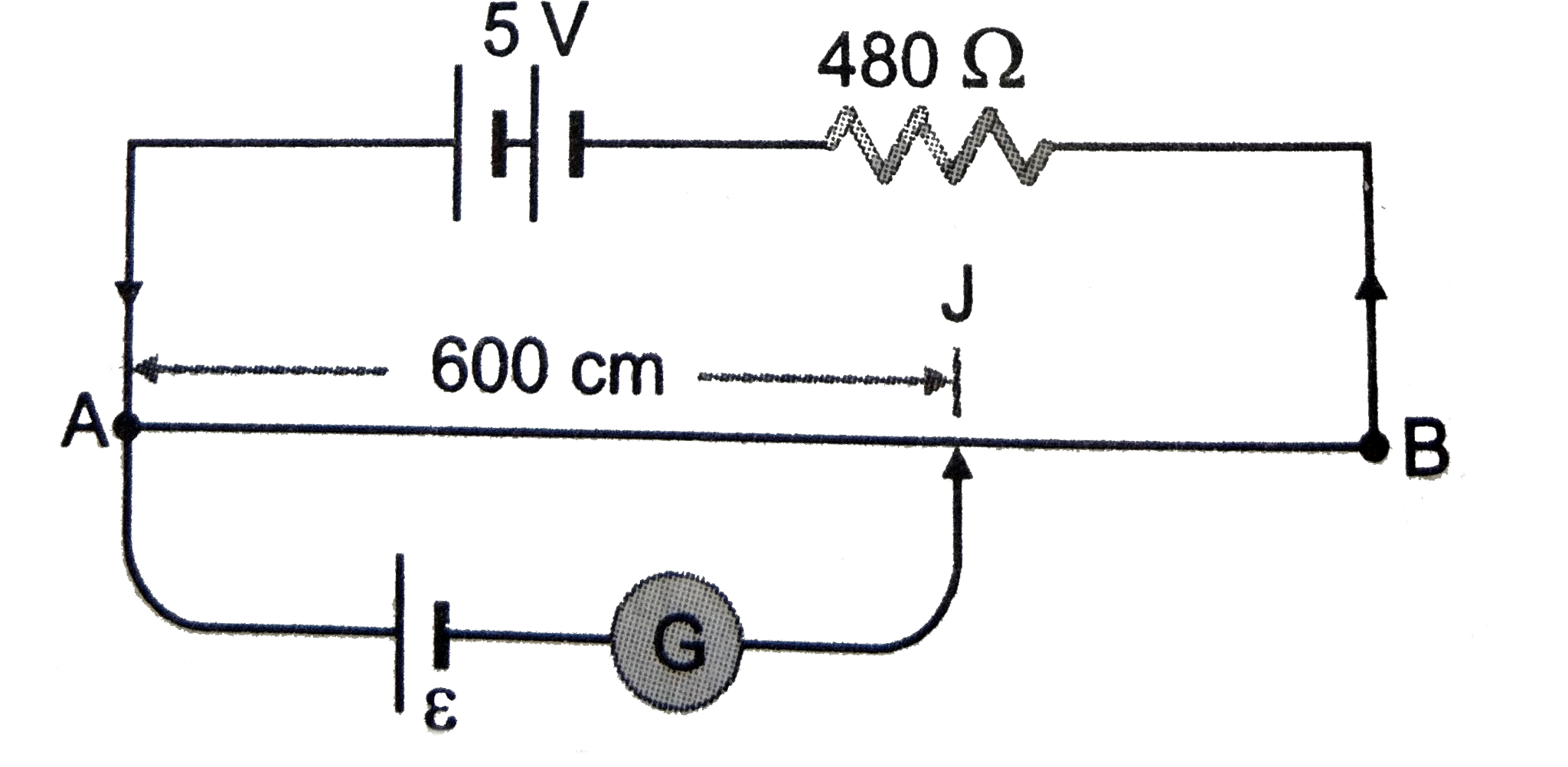 04:01View Solution
04:01View SolutionAB is `1` meter long uniform wire of `10 Omega` resistance. Other data are shown in the diagram. Calculate (i) potential gradient along `AB` (ii) length `AO` when galvanometer shown deflection
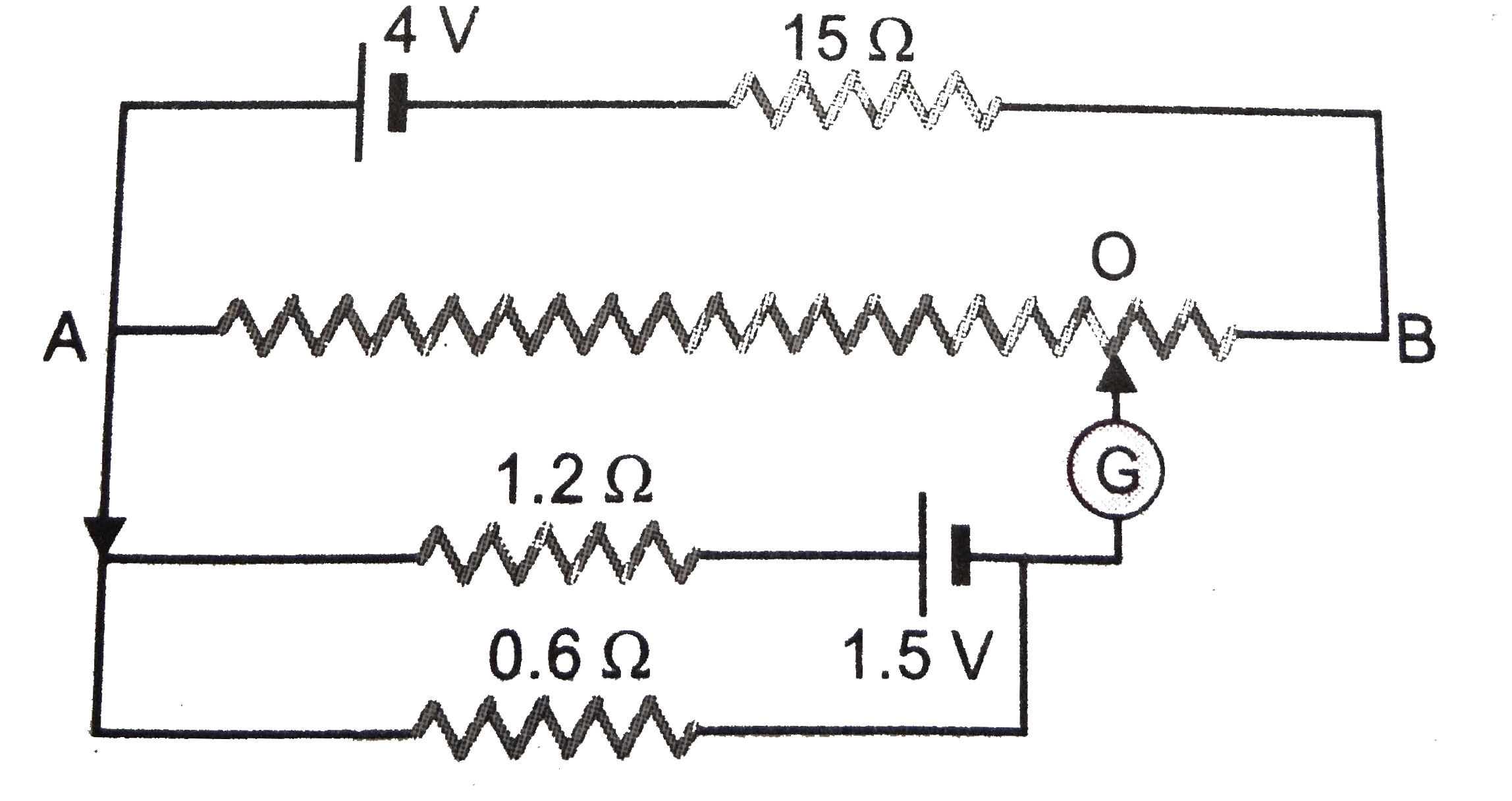 03:04View Solution
03:04View SolutionIn an experiment with a potentiometer, the null point is obtained at a distance of `60 cm` along
the wire from the common terminal with a leclanche cell. When a shunt resistance of `1 Omega` is
connected across the cell, the null point shifts to a distance of `30 cm` from the common terminal. what is the
internal resistance of the cell?02:51View SolutionFigure `6.12` shows a potentiometer circular for comparison of two resistances. The balance point with a standard resistor `R = 10.0 Omeag ` is found to be `58.3 cm`, while that with the unknows resistance `X` is `68.5 cm`. Determine the value of `X`. What would you do if you fail to find a balance point with the given cell `E`?
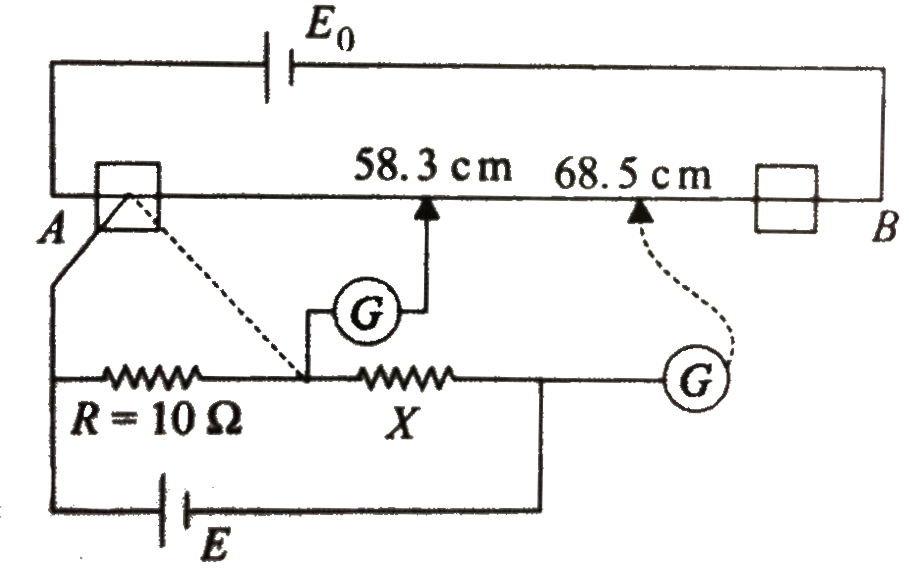 07:09View Solution
07:09View SolutionFigure `6.13` shows a `2.0 V` potentiometer used for the determination of internal resistance of a `1.5 V` cell. The balance point of the cell in open circuit is `76.3 cm`. Whan a resistor of `9.5 Omega` is used in the external circuit of the cell, the balance point shifts to `64.8 cm`, length of the potentiometer. Dentermine the internal resistance of the cell.
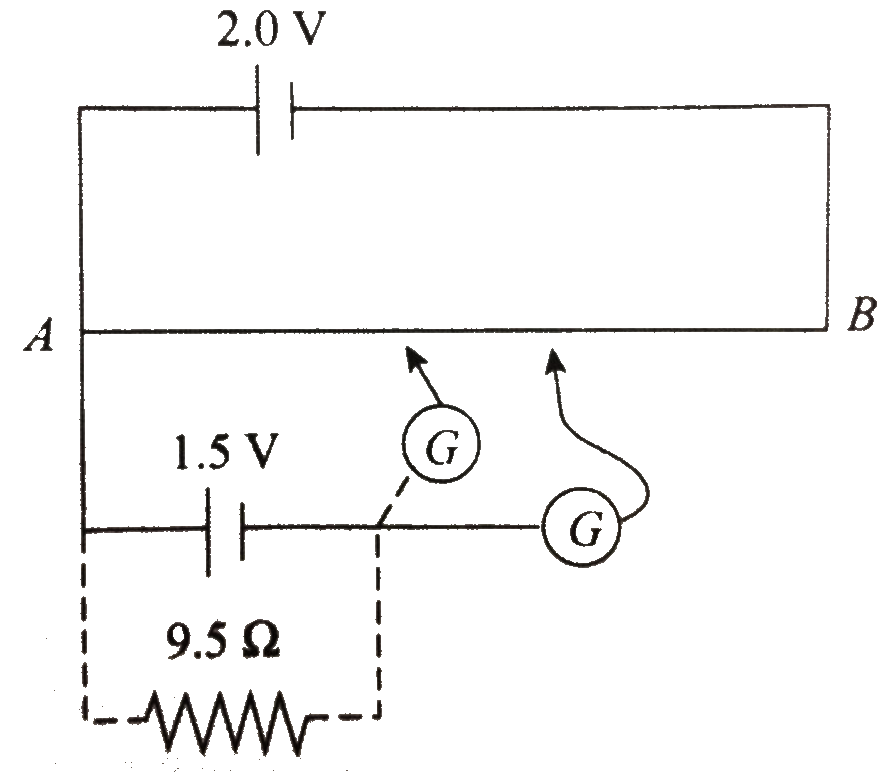 02:37View Solution
02:37View SolutionP,Q,R and S are the resistances taken in cyclic order in a wheatstone bridge network. P and Q are the ratio coils, S is unknown resistance and R is a `10Omega` coil. A balance is obtained when R is shunted with a resistance of `190Omega`. When P and Q are interchanged, the balance is restored by altering the shunt across R to `265Omega`. find the resitance of S and the ratio P:Q?
03:22View Solution
In figure. `P=3Omega,Q=2Omega,R=6Omega,S=4Omega and X=5Omega`. Calculate the current I.02:14View Solution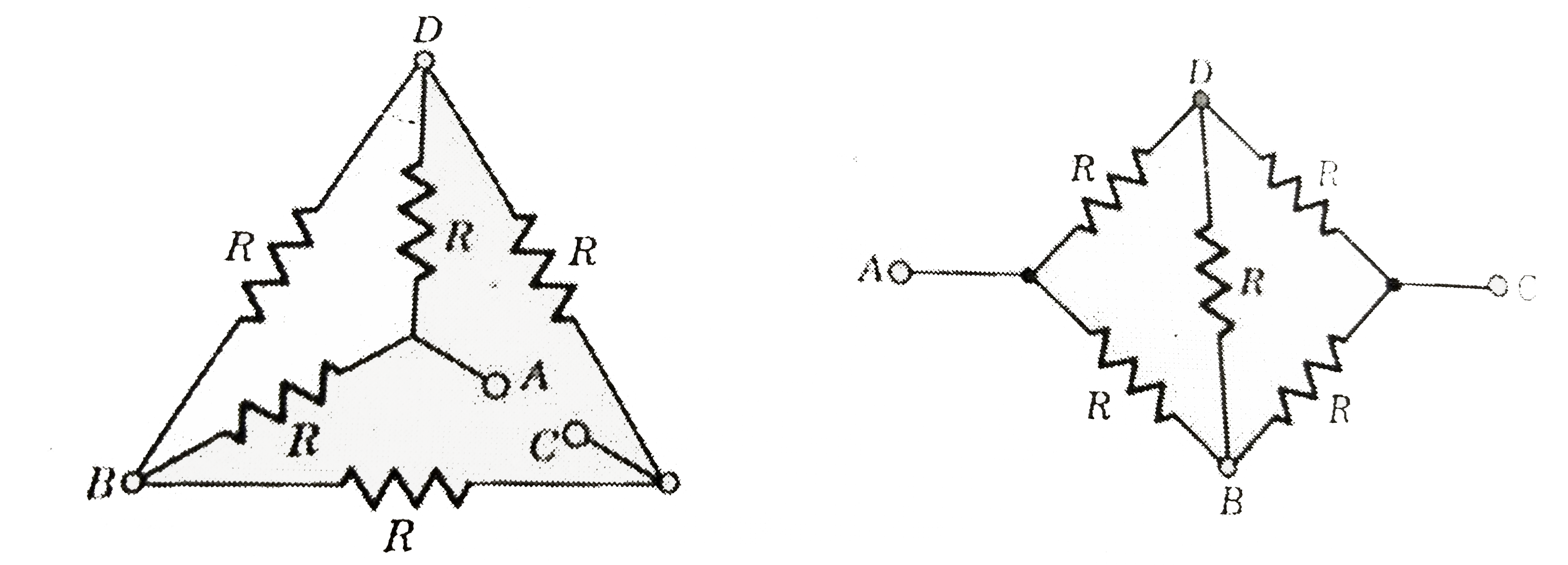
Each of the resistances in the network shown in figure (a) equals R. find the resitance between two terminals A and C.01:24View Solution
Each resistor r shown in figure. Has a resistance of `10Omega` and the battery has an emf of 6V. Find the current supplied by battery.01:38View SolutionIn the following circuit, a metre bridge is shown in its balanced state. The metre bridge wire has a resistance of 1 ohm/cm. calculate the value of the unknown resistance X and the current drawn from the battery of negligible internal resistance.
02:14View SolutionAn unknown resistance 'X' is placed in the left gap and and a known resistance of `60Omega` is plaecd in the right gap of metre bridge. The null point is obtained at 40 cm from the left end fo the bridge. Fid the unknown resistance.
01:43View Solution(i) In a metre bridge, the balance point is found to be at 39.5 cm from the end A, when the resistor Y is of `12.5 Omega`. Determine the resistance of X. Made of thick copper strips?
(ii). Determine the balance point of the bridge above if X and Y are interchanged.
(iii). what happens if the galvanometer and cell are interchanged at the balance point of the bridge ? Would the galvanometer show any current?04:06View SolutionFigure 6.32 shows a meter bridge in the (which is nothing but a particle wheastone bridge), consisting of two resistors `X` and `Y` together in parellel with a meter long constantan wire of uniform cross section.


with the help of a movable contact `d`, one can change the ratio of resistance of the two segments of the wire until a sensitive galvanometer `G` connected across `b` and `D` shows no deflection. The null point is found to be at a distance of `33.7 cm`. The resistor `Y` is shunted by a resistance of `12 Omega`, and the null point is found to shift by a distance of `18.2 cm`. Determine the resistance of `X` and `Y`.08:11View SolutionIn the metre-bridge experiment with uknown resistance X in the left gap and a known resistance of `60Omega` in the right gap, null point is obtained at l cm from left. If the unknown resistance X is shunted by an equal resistance, what should be the value of the known resistance in the right gap in order to get the null point at the same position?.
02:52View Solution
Example questions and complete solutions for chapter ELECTRICAL INSTRUMENTS of DHANPAT RAI & CO PHYSICS (HINGLISH) of Class 12
